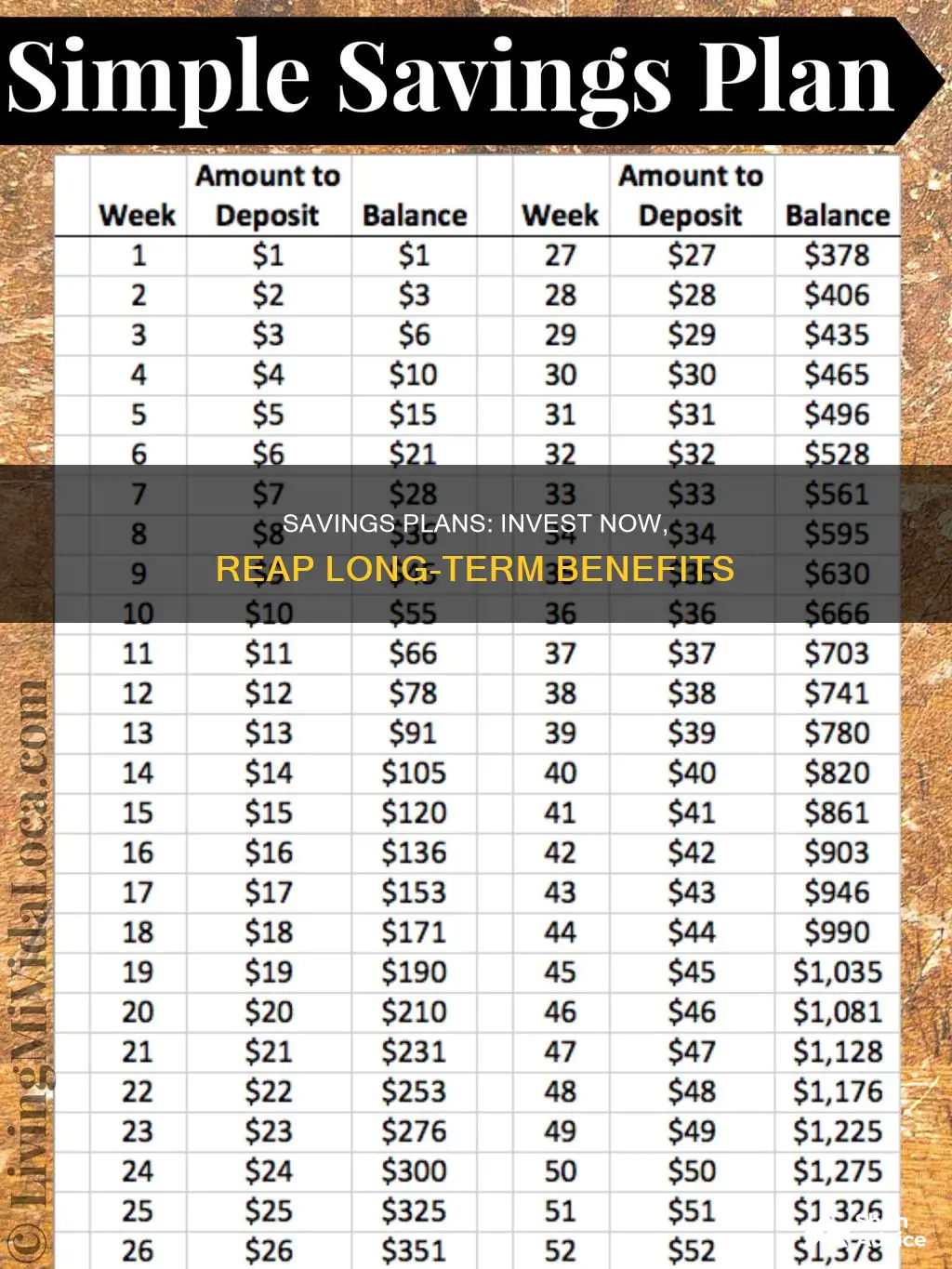
Saving and investing are both important concepts for building a sound financial foundation. While both can help you achieve a more comfortable financial future, it's crucial to understand the differences and make informed decisions based on your specific goals and circumstances. The main distinction between saving and investing lies in the level of risk involved. Saving typically carries a lower risk, resulting in modest returns with almost no chance of loss. On the other hand, investing offers the opportunity for higher returns but comes with the inherent risk of potential loss.
When deciding whether to save or invest, it's essential to consider your financial goals, time horizon, and risk tolerance. Saving is generally recommended for short-term goals, unexpected expenses, and building an emergency fund. It provides easy access to funds and offers security with minimal risk. However, the returns on savings accounts may not always keep up with inflation, resulting in a loss of purchasing power over time.
On the other hand, investing is suitable for long-term goals, such as retirement planning or building generational wealth. It provides the potential for higher returns, enabling your money to grow over time. However, investing comes with the risk of losing money, and there are no guarantees. It's important to diversify your portfolio and choose investments that align with your goals, risk tolerance, and time horizon.
In summary, both saving and investing play crucial roles in financial planning. Saving is ideal for short-term needs and provides security, while investing offers higher growth potential for long-term goals but carries a higher risk. It's important to evaluate your personal financial situation and goals to determine the right balance between saving and investing.
| Characteristics | Values |
|---|---|
| Risk | Low risk for savings plans; higher risk for investing |
| Returns | Lower returns for savings plans; higher returns for investing |
| Liquidity | High liquidity for savings plans; low liquidity for investing |
| Goals | Short-term goals for savings plans; long-term goals for investing |
| Time horizon | Less than 5 years for savings plans; more than 5 years for investing |
What You'll Learn

When you have an emergency fund
Understand what constitutes an emergency:
Not every unexpected expense is a dire emergency. Set clear guidelines for yourself on what you consider an emergency. For example, a sudden medical bill or car repair necessary for your daily commute may qualify as emergencies. On the other hand, impulse purchases, vacations, and entertainment expenses should not be labelled as emergencies.
Cover essential expenses during job loss:
If you lose your job, your emergency fund can be a lifeline, helping you cover essential expenses like housing, food, and job search-related costs. It's recommended to have three to six months' worth of living expenses saved up for situations like these.
Supplement reduced income:
If your income decreases due to reduced work hours, a variable income stream, or choosing to work less, your emergency fund can help bridge the gap. First, try to cut down expenses, then use your emergency savings to cover the remaining essential costs.
Pay for medical bills:
Unexpected medical emergencies can be a significant financial burden, even with insurance. In such cases, it's reasonable to use your emergency fund to pay for co-pays or reach your deductible. Consider negotiating with your healthcare provider or setting up a payment plan to reduce the burden on your savings.
Handle emergency repairs:
Emergency home or car repairs that are necessary for your daily life may warrant tapping into your emergency fund. For example, if your refrigerator breaks down and needs to be replaced promptly, your emergency fund can help cover this unexpected cost.
Remember, the primary purpose of an emergency fund is to provide financial security and stability during unexpected events. While it's important to use it when needed, also focus on rebuilding your emergency fund after using it. Start small, increase contributions as finances stabilize, and consider setting up automatic transfers to make saving easier.
Consumption, Savings, and Investment: Understanding Aggregate Behavior
You may want to see also

When you have a long-term goal
When deciding whether to save or invest, it is important to consider your financial goals and time horizon. If you are planning for retirement or another long-term goal, investing is generally the better option as it provides an opportunity to grow your money over time.
- Risk and return: Investing typically offers the potential for higher returns than saving. However, it is important to remember that investing comes with risk. The value of your investments can fluctuate, and there is no guarantee that you will make money.
- Time horizon: Investing is typically better suited for long-term goals. If you have a longer time horizon, you can ride out the ups and downs of the market and potentially achieve higher returns.
- Diversification: To manage risk, it is important to diversify your investments across different companies, industries, and asset classes. This can help reduce the impact of market volatility on your portfolio.
- Emergency fund: Before investing for the long term, it is generally recommended to have an adequate emergency fund in place. This will ensure that you have a safety net in case of unexpected expenses or financial setbacks.
- Investment options: There are various investment options available, such as stocks, bonds, exchange-traded funds (ETFs), mutual funds, and real estate. It is important to understand the risks and potential returns associated with each option before investing.
- Fees and taxes: When investing, consider the fees and taxes associated with different investment options. These can impact your overall returns.
- Seeking professional advice: Consider seeking advice from a financial advisor or planner to ensure that your investment decisions align with your long-term goals and risk tolerance.
In summary, when you have a long-term goal, investing is generally the better option as it provides an opportunity to grow your wealth over time. However, it is important to carefully consider your financial goals, risk tolerance, and time horizon before investing.
Savings, Investment, Employment, and GDP: A Balancing Act
You may want to see also

When you have a high-risk tolerance
Time Horizon
The time horizon of your financial goals is an important factor to consider. If you are planning for retirement or have other long-term goals, investing is usually a better option as it provides the potential for higher returns over time. On the other hand, if you have short-term goals or need access to your funds in the near future, saving may be a more suitable option as it offers quicker access to funds and lower risk.
Risk Tolerance
Your risk tolerance refers to the amount of risk you are comfortable taking on. If you have a high-risk tolerance, investing may be a better option as it provides the potential for higher returns but also comes with the risk of losing money. If you are more risk-averse, saving may be preferable as it offers a lower risk of losing money, but may also result in lower returns.
Financial Goals
The nature of your financial goals will also influence your decision. If your goal is to preserve your capital and avoid taking on high-interest debt, saving may be the best option. On the other hand, if your goal is to grow your wealth and achieve long-term financial goals, investing may be more suitable.
Emergency Fund
It is generally recommended to have an emergency fund that can cover three to six months' worth of living expenses before considering investing. This will provide a safety net in case of unexpected expenses or financial setbacks.
Investment Options
When investing, it is important to consider the different investment options available, such as stocks, bonds, exchange-traded funds (ETFs), mutual funds, and real estate. Each investment option has its own risks and potential returns, so it is important to do your research and understand the potential risks and rewards of each option.
Diversification
Diversifying your investments across different asset classes, industries, and companies can help reduce risk and improve your potential for long-term gains. This is because diversifying your portfolio can help spread out the impact of market volatility and reduce the impact of losses in any one area.
In conclusion, when you have a high-risk tolerance, investing can be a good option for achieving your financial goals. However, it is important to carefully consider your time horizon, risk tolerance, financial goals, and emergency fund before deciding whether to invest or save.
ETFs: Smart Short-Term Investment Strategy for Savings?
You may want to see also

When you have a large amount of disposable income
Disposable income is the money you have left after paying taxes and other mandatory charges. It's essential for building financial flexibility, achieving a higher level of living, and investing in your future. Here are some tips on what to do when you have a large amount of disposable income:
Understand the difference between saving and investing:
Saving refers to setting aside money in a low-risk account, such as a savings account or certificate of deposit (CD). It's ideal for short-term financial goals and building an emergency fund. On the other hand, investing involves using your money to buy assets, such as stocks, bonds, or real estate, with the expectation of earning higher returns over the long term.
Prioritize saving first:
Before investing, ensure you have a solid savings foundation. Aim to save enough to cover at least three to six months' worth of living expenses in an emergency fund. This will provide a safety net in case of unexpected financial setbacks, such as job loss or medical emergencies.
Maximize tax-advantaged retirement accounts:
Take advantage of tax-advantaged retirement accounts, such as a 401(k) or an Individual Retirement Account (IRA). These accounts offer tax benefits, such as tax-deductible contributions or tax-deferred growth, maximizing your wealth-building potential.
Invest for the long term:
Investing is typically suited for longer-term goals, such as retirement or saving for your child's education. By investing for the long term, you can ride out short-term market volatility and take advantage of compound growth. Diversify your investments across different asset classes and industries to manage risk.
Maintain a balanced approach:
Finding the right balance between saving and investing is crucial. While investing offers the potential for higher returns, it also carries the risk of losing money. Saving provides stability and liquidity, allowing you to access your funds easily for short-term needs. Consider your risk tolerance, financial goals, and time horizon when deciding how much to save and invest.
In summary, when you have a large amount of disposable income, focus on building a solid savings foundation, maximizing tax-advantaged retirement accounts, and investing for the long term. Maintain a balanced approach that aligns with your financial goals and risk tolerance.
Investment-Led Growth: Impact on National Savings and Economy
You may want to see also

When you have a financial advisor
Understanding Their Role:
Financial advisors can provide a comprehensive service, covering both short-term and long-term financial goals. They often act as educators, helping clients understand complex financial topics and making informed decisions.
##
Credentials and Fiduciary Duty:
When choosing a financial advisor, look for credentials such as Certified Financial Planner (CFP) or Registered Investment Advisor (RIA). CFPs have a fiduciary duty to their clients, and RIAs are also bound by fiduciary duty, ensuring they act in their client's best interest.
##
Types of Financial Advisors:
Financial advisors offer different services, including holistic financial planning, investment advice, debt management, and retirement planning. Some advisors specialise in specific areas like taxation, estate planning, or insurance. Robo-advisors are digital platforms that provide automated investment management based on algorithms.
##
Cost and Payment Structures:
Financial advisors have varying cost structures. Robo-advisors often charge a low percentage of your account balance. Online financial advisors may charge a flat subscription fee, a percentage of assets, or a combination. Traditional in-person advisors typically charge around 1% of assets under management and may have high minimum balance requirements.
##
Vetting and Hiring:
When considering a financial advisor, vet their background and credentials. Check their Form ADV, review their employment record on FINRA's BrokerCheck website, and ask for referrals from friends and family. During the hiring process, the advisor will assess your financial situation, provide an engagement letter, and gather information to manage your finances.
##
Ongoing Communication:
Financial advisors should maintain regular contact and provide updates on your investment portfolio and financial plans. They are there to support you, especially during significant life changes or financial decisions.
The PVF Savings Investment: A Smart Financial Move
You may want to see also
Frequently asked questions
This depends on your financial situation, affordability, and appetite for risk. Lump-sum investing means taking all or a large portion of your cash and investing it all at once. This is a good option if you want to put your money to work as soon as possible and are comfortable with the risks involved. Regular investing, on the other hand, involves contributing smaller amounts gradually and consistently over time, regardless of market conditions. This approach can help reduce the effect of volatility and may be more comfortable for investors who want to avoid taking on a lot of risk.
Lump-sum investing can be beneficial if you want to put your money to work immediately and take advantage of potential long-term growth. It also takes the stress out of trying to time your investments, as you don't have to worry about figuring out the best time to invest. Additionally, lump-sum investing may reduce the overall commissions you incur compared to making smaller periodic investments.
The main downside of lump-sum investing is the risk involved. You are investing a large amount of money at a single point in time, so if the market is high, you run the risk of incurring losses if you need to sell in the near term. Lump-sum investing may also require you to have a significant amount of cash on hand, which may not be feasible for everyone.
Regular investing helps smooth out bumps in the market as you are not investing all your money at once. This approach can reduce the impact of volatility and is less risky than lump-sum investing. It is also a good option for novice investors as it allows them to get comfortable with investing smaller amounts gradually. Regular investing can help you avoid the stress of worrying about market timing.
The main disadvantage of regular investing is that if the market rises over the investing period and volatility is low, you may have less money in the market to capture the gains. Regular investing may also not be feasible for everyone, especially those who do not have a steady income or the financial ability to invest larger amounts at once.







